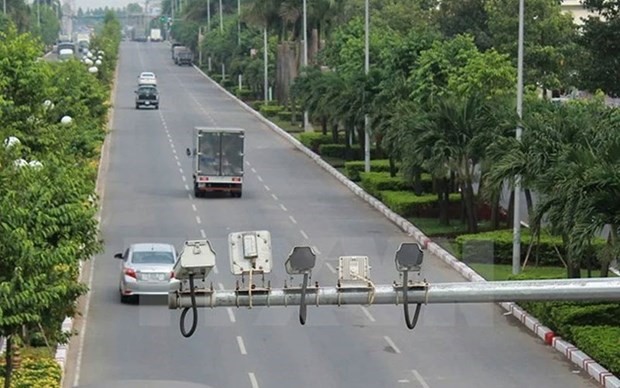
|
Getting your Trinity Audio player ready...
|
Ho Chi Minh City is not only focusing on completing its transport infrastructure but is also making significant strides in building a sophisticated smart traffic management and operation system to address congestion and reduce accidents in the bustling southern economic hub.

The city has already achieved a notable milestone by becoming the first locality to establish a smart traffic operation centre, operational since 2019, which has played a crucial role in enhancing the efficiency of traffic monitoring and regulation.
According to Doan Van Tan, Director of the Urban Traffic Management and Operations Centre under the HCM City Department of Transport, the city is actively investing in completing its transport system and major works using the Transit Oriented Development (TOD) model. This approach facilitates the implementation of digital platforms for traffic management and regulation.
Tan disclosed that there are plans to develop a comprehensive traffic management and operation centre that encompasses all necessary functions in line with the city’s traffic development goals.
Experts suggest that building upon the existing smart traffic operation centre, Ho Chi Minh City should aim for a breakthrough by incorporating new technologies, including artificial intelligence (AI), into its traffic management strategies.
To achieve this, the city should prioritise increasing data connections and sharing while expanding collaboration with public transportation service providers and transport work management agencies. This collaborative effort is crucial to enhancing the efficiency of traffic regulation and operation, enabling thorough research and assessment of the urban traffic situation and effective solutions for tackling congestion.
The phased implementation of these solutions is expected to contribute significantly to the continuous improvement and evolution of Ho Chi Minh City’s smart traffic system in the foreseeable future.
This strategic urban development plan aligns with Hanoi’s commitment to comprehensive growth and sustainable practices, setting the stage not only for the capital city but also for the entire Red River Delta region, evidence of Ho Chi Minh City’s efforts to integrate smart traffic management for enhanced urban living.
OpenGov Asia reported, that in a significant move towards holistic urban development, Hanoi has unveiled its general planning for the 2021-2030 period, with a forward-looking vision reaching up to 2050. Minister of Planning and Investment, Nguyen Chi Dung, expressed confidence that this meticulously crafted plan, developed in just 12 months, will not only shape the trajectory of Hanoi’s growth but also serve as a driving force for the entire Red River Delta region.
Despite the tight timeframe, the planning process adhered diligently to legal regulations governing urban planning. Hanoi engaged in extensive consultations with 21 ministries, 15 cities and provinces in the region, central agencies, experts, scientists, and various stakeholders. This collaborative approach underscores the city’s commitment to a comprehensive and inclusive development strategy.
At its core, the planning document envisions Hanoi as a hub of fast, sustainable, creative, and inclusive development. Positioned as a growth pole, the city aims to lead and propel broader regional development. A primary focus is on addressing environmental challenges, with urgent missions targeting the revival of polluted rivers and the management of inundation. The plan places green development and a circular economy at its core, aligning with global efforts for a net-zero emissions future.
















